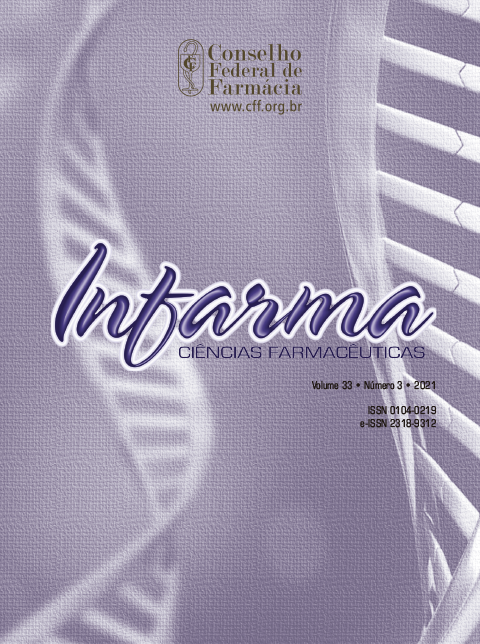POTENTIAL DRUG-FOOD AND DRUG-MEDICINAL PLANT INTERACTIONS IN DISTRICT PHARMACIES AT A SERIDÓ POTIGUAR COUNTY
DOI:
https://doi.org/10.14450/2318-9312.v33.e3.a2021.pp257-268Keywords:
antihypertensive, antidiabetics, drug interactions, primary care.Abstract
This study evaluated possible drug-food and drug-medicinal plant interactions involving antidiabetics and antihypertensive medication on primary health care in the city of Caicó, RN, Brazil, through a descriptiveexploratory cross-sectional study, with a quantitative approach involving two district pharmacies in Caicó, RN. The object of study consisted of duplicated drug prescriptions of medication dispensed during the period of August to December 2019. Micromedex, Drugs.com and Up to Date, were used to assess drugfood interactions in addition to the medicinal informational leaflets provided by the National Health Surveillance Agency (Anvisa). Due to the lack of databases referring to medicinal plants, the evaluation of drug-medicinal plant interactions was based on articles indexed via CAPES and Google Scholar journals. Among 569 analyzed prescriptions, 11 contained antihypertensive and 3 contained anti-diabetic drugs. Among these prescriptions, 10 contained important interactions; 6 were considered negative (1 mild, 4 moderate and 1 moderate to severe) and 4 positives. Furthermore, we observed that 7 drugs were involved in drug-medicinal plant interactions, which were considered positive or negative depending on the dosage of the medication and medicinal plant. Therefore, it is of utmost importance to develop more studies on this topic as well as to raise awareness and instrumentalize health professionals, and users, about the proper management of pharmacological therapy in order to enjoy the beneficial interactions and avoid the negative impacts on therapeutic effectiveness and patient safety.
Downloads
Published
How to Cite
Issue
Section
License
Authors who publish in this journal agree to the following terms:
- Authors retain the copyright and grant the journal the right of first publication, with the work simultaneously licensed under the Licença Creative Commons Attribution which allows the sharing of work with acknowledgment of authorship and initial publication in this journal.
- Authors are authorized to take additional contracts separately, for non-exclusive distribution of the version of the work published in this journal (e.g. publish in institutional repository or as a book chapter), with acknowledgment of authorship and initial publication in this journal.
- Authors are allowed and encouraged to publish and distribute their work online (e.g. in institutional repositories or on their personal page) at any point before or during the editorial process, as this can generate productive changes as well as increase the impact and Citation of published work (See O Efeito do Acesso Livre ).


